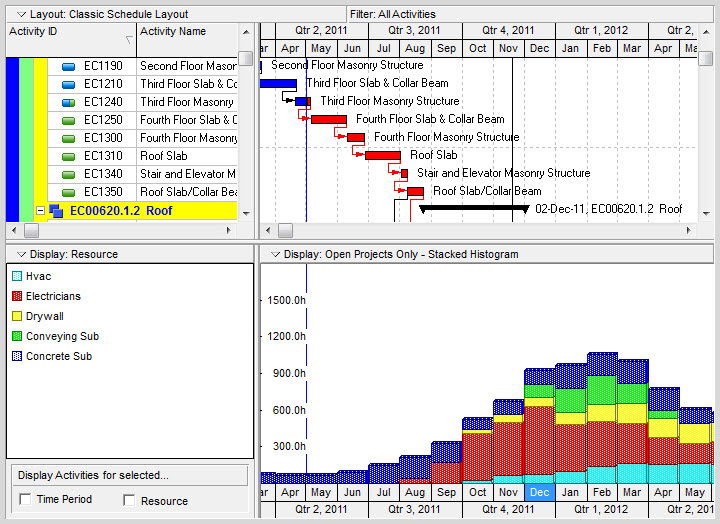Ms Project What Is A Unit
MS Project uses a default which is WORK = DURATION x UNITS, that means by changing the remaining duration of a task we are changing the total duration of the task, which means we have to recalculate either Work or Units. If we haven’t set the MS Project scheduling calculation method, then the default is (Fixed Units / Effort Driven) which. Learn how to set Max Units for a single or consolidated resource as well as understand how the math works! OntrackTV - Any Time. Microsoft Project 2016 Tutorial.
If you are an experienced project manager then it’s likely that you are familiar with the Assignment Units field. For those who aren’t, Assignment Units determines the rate at which a resource is assigned to work on a task. This field is set to 100% or the Resource’s Max Units (whichever is the lesser of the two) by default, although it can be less or more depending on the needs of the project manager. In Project 2007, and previous versions, when this value differs from 100% we show it next to the resource name in the Gantt chart. For Project 2010 we’ve made some changes to the way that the Assignment Units field is calculated. Primarily, these changes were made in response to customer feedback about the way calculations were impacted when resources entered overtime work.

Ms Project Assignment Units
For this release we’ve clarified the definition of the Peak field and the Assignment Units field which previously had some functional overlap but now fill more defined, separate, roles. As a result of these changes the Assignment Units field is no longer automatically modified to be greater or less than default value of 100%; as a consequence the field does not show up in the Gantt chart as often as it used to. Brian, your explanation is very thorough, however the Microsoft made a wrong design choice in my mind.
Microsoft decided that the Asssignment Units field should now always reflect what you manually entered. To the user this will appear as if the formula does not work any longer because it does not recalculate the Units any longer as it did in EVERY previous release. Thousands of people have been using this fomula and manipulating their schedules with it.
Knowing and using the formula gave a sense of mastering the tool.What should Microsoft have done to solve the issue with the actual hours driving the Assignment Units? Microsoft should have calculated the Assignment Units based on the Remaining Duration part of the task instead of on the entire Duration.
Ms Project What Is A Unit Called
This would have taken care of the problem without causing such an upheaval among people who monitor and rely on the formula to manipulate their schedule. I hope Microsoft will still reconsider its poor design choice.
The peak value is good enough to find any cases of a daily overallocation. Bitstream font navigator free download. Maybe track overtime. But it doesn’t actually show if the task as a whole is overallocated or not.Imagine a task with 8h work on Monday, 10h on Tuesday and 4h on Wednesday. The peak value would be 125%, but the average allocation 91%.This information would be interesting to determine if the task was doable at all in the predicted amount of time. One could also know if there is potential space to deal with the overallocation without prolonging the task. This seems to mostly make sense, however it might have been nice then if Microsoft had carried the Peak field into the Task Details form, as well as others since from these views only display the Assignment Units.
Or allowed the user to insert other fields into Task Details form as an example to at least customize them as necessary to see the Peak field. Since this information is not available in the Task Details view, it just looks like the product is broken. Fixed duration 5 day task, 20 hours on each resouce (2 total), shows 100% Assignment units, just doesn't seem very intuitive. Agreed that the two uses should have been called out, however the implementation was poorly executed and information regarding the change has been difficult to come. I recently spoke with a Microsoft certified consultant who hadn't even heard about this change and chalked it up as being a bug in the program.
Additionally, other reference materials I've consulted (various books, Lynda.com, etc.) make no mention of the change at all.The functionality change as a whole should have been an optional preference, set by the user. I was perfectly content using the old version and if I could click a box to revert back, I would.The variability of which screens allow you to view Peak should have been better thought out. The change as a whole should have been better thought out.
This is an introduction to building a basic schedule in Microsoft Project 2010. I tried very hard not to drift into extra technical discussion about methodology or advanced software usage. The video is a brief abstract of the art of scheduling. I work with a lot of project managers that wish to drive the software for brainstorming purposes, but do not want to read a phonebook-sized software manual.
I hope this is useful information for the end users. I also took the liberty of inserting some of my guitar playing into the intro/outro.